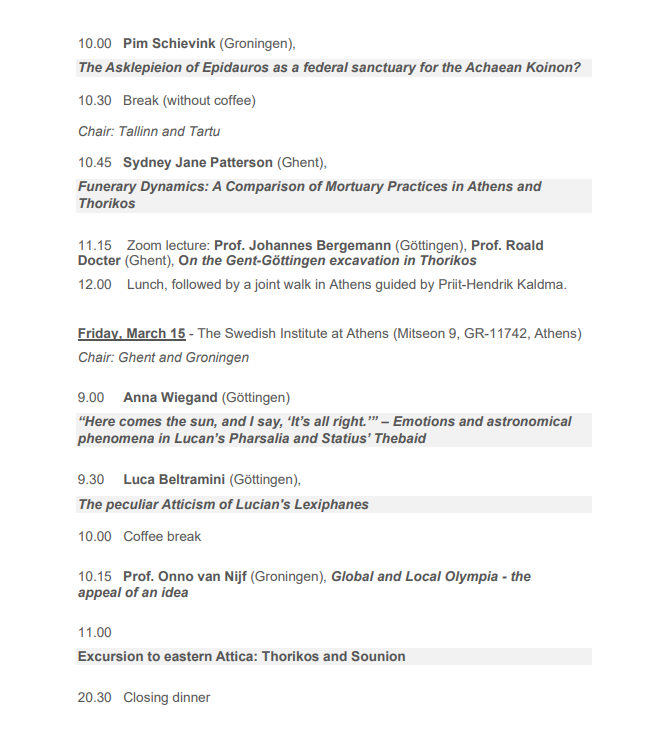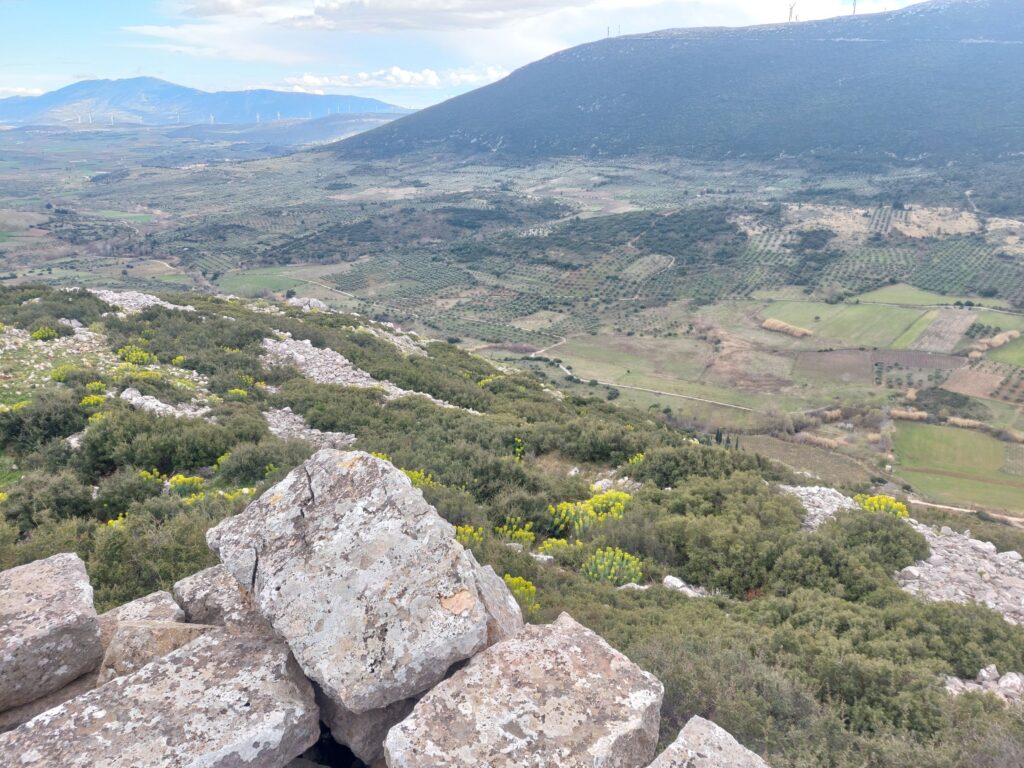This year’s Enlight (formerly U4), a Winter School that offers PhD candidates the opportunity to present their work to peers and professors from various European universities, was themed ‘Big and Small, Global and Local: Dimensions of Antiquity’. The University of Tartu organised it in collaboration with the Finnish Institute at Athens, the Belgian School at Athens, the Swedish Institute at Athens, Ghent University, the University of Göttingen, the University of Groningen, and Uppsala University.
The conference theme was broad, resulting in a diverse range of topics covered in the papers presented. The first day of the conference was particularly diverse, with presentations on a variety of subjects including the use of Latin in Greek inscriptions, the reception of antiquity in Early Modern manuscripts of Tartu University, ancient theatre, Archaic Athenian archons, late antique aristocracy, early Iron age Cyclades and Hesiod’s world. (See the programme below, and the programme including abstracts on https://sisu.ut.ee/enlight-u4-ancientworld-ws2024/programme)



The remaining papers for this week were more evenly distributed throughout the remaining days, as we also had excursions on these days. They covered a range of topics, including Byzantine manuscripts, funerary practices in Athens and Thorikos, an introduction to Thorikos, emotions in Lucan, Atticism in Lucian, and the global concept of Olympia.
My own paper focused on the agencies and strategies involved in storing federal documents in the sanctuary of Asklepios in Epidauros, as a means to problematise the biases coming with the scales one attributes to a sanctuary (e.g. Panhellenic might neglect the local level, while the federal approach may encounter similar challenges but on a smaller level). The site is often considered a federal sanctuary for the Achaean Koinon and a hotspot for the publication of international politics. However, as demonstrated in this presentation, the main Achaean documents, including arbitrations and a ritual to Hygieia, directly concern Epidauros itself. The honorific statues, often associated with the federation, are primarily placed here under Epidaurian authority, or by Spartan and Cretan authorities, but not by the federation. This highlights the significance of local agency in this ‘global’ space.
On Wednesday, we visited Thebes and Askra, specifically the Valley of the Muses, and climbed to the Akropolis of Askra. Although it was a tough climb, the view was worth it! Other excursions this week included Thorikos and Sounion.

This week has been intellectually stimulating. Thankfully, I also had the opportunity to visit various schools in Athens and attend the Athens Greek Religion Seminar at the Swedish Institute at Athens. It was an enjoyable experience. The coming days I will utilise my time in Greece to visit the Asklepieion of Kos and Paros.

Leave a Reply